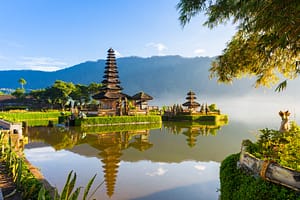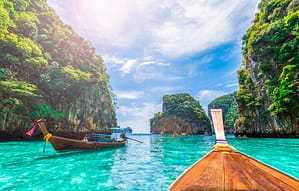This is you: you work, possibly in an office, probably in a 9-5, although sometimes it’s more like 8-6 without a lunch break.
You don’t see much of your family – your partner works too, your kids are in school and, you know, they’ve got their own lives, especially since the older one got their P-plates.
You feel like you’re working towards nothing. A new car, a better house, a promotion … none of it means anything if you’re not experiencing it all with your loved ones.

So you listened to the experts and started studying ways to help bring your family together. You went out there and learned about the amazing ways holidaying can benefit both mental health and domestic cohesion.
But your kids don’t enjoy the holidays. They did, when they were a lot younger, but now the whole ‘plane-trip-and-four-days-at-a-resort’ isn’t working for them. If you’re honest, it isn’t for you either.
You keep thinking back to when you and your partner were younger (before your bundles of joy arrived onto the scene to complicate things). You remember those long, lazy days exploring the untrodden corners of the globe, the nights watching tropical sunsets or huddled by a campfire.
And the feeling – that breathless, butterflies-in-belly feeling when you’re about to take off, when you’re about to touch down, when your feet hit the ground and you know that just around the corner there is something, an adventure or an experience or a moment, that is wholly unexpected.
That’s what you miss. The authenticity of real travel. And that’s what your family misses too, even if they don’t realise it. Because here’s the thing: travel done right is never boring, and it’s never something you get over.
We want to bring real travelling back to you, and that’s why we’re writing about one of the latest trends in holidaying: deep travel.
What is Deep Travel?
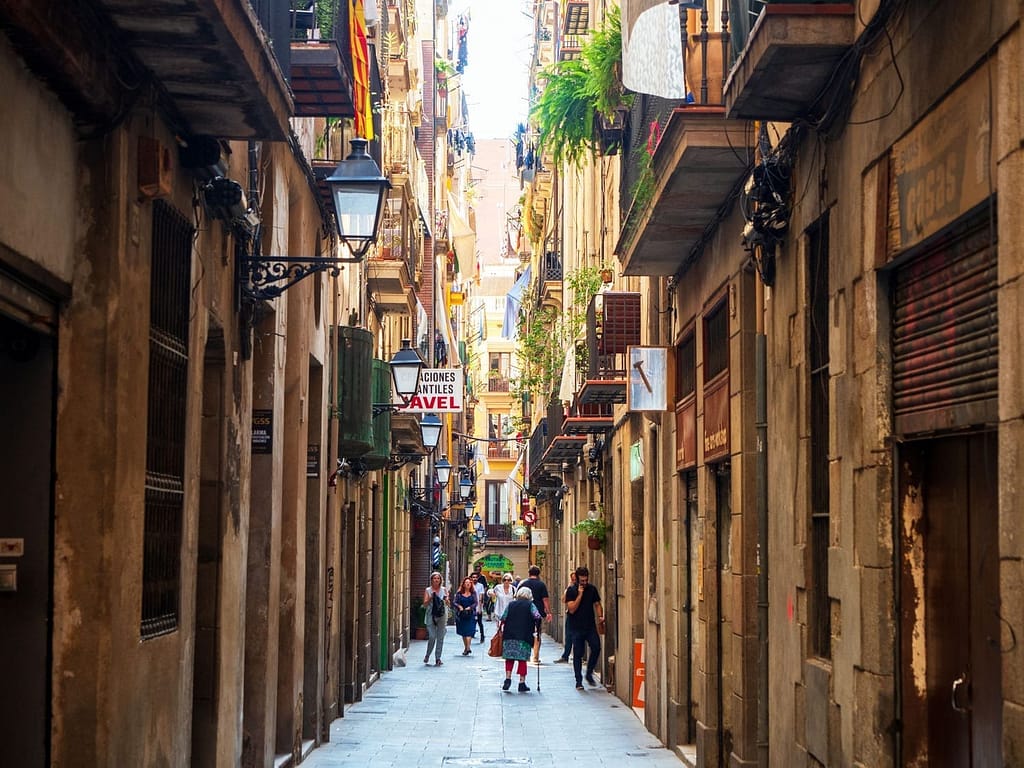
Broadly defined, ‘deep travel’ is the process of getting to know a place beyond the superficial details. It involves absorbing the culture, history and experiential quality of a destination without needing to spend huge amounts of time there.
Author Tony Hiss wrote about deep travel back in 2010 in his book In Motion: The Experience of Travel. You can read about his take on it here.
While In Motion makes a lot of interesting points, Tony Hiss’s notion of deep travel isn’t one that’s easily accessible for normal people (especially ones with families). That’s why we’ve written this guide – we actually break down our deep travel holidaying technique, which allows you to get that deep, satisfying holiday experience you’ve been longing for.
The Deep Travel Mindset
The first thing we recommend doing is really thinking about why you’re going on a holiday. Travelling together brings families closer, but what’s the real reason for getting away? Is it just a break from work? Are you just booking in a few nights here and a few days there so you can forget about a job you hate?
There’s nothing wrong with viewing vacations as ‘time off’. After all, that’s what they are, and mental reprieves are incredibly important. But we want you to change your thinking. Stop viewing holidays as an intermission from life. Start viewing them as life.
What would you rather? A life where you commute two hours a day, mechanically performing tasks in a position that’s probably going to be made redundant anyway, or one great big adventure that explodes with the unexpected, where you’re enjoying every moment instead of looking ahead to the weekend or annual leave?
Work to live instead of living to work. This is the mindset you need to deep travel.
Once you have it, you’re already halfway there.
Here’s the second thing: don’t cling to your itinerary like a lifeboat, and don’t feel like you need to research every single detail of your destination.
Don’t get us wrong – itineraries are good. They save time and they help structure your holiday so you don’t feel lost. But it’s also important to view your itinerary as a guide, not a mandate. You can spend more time at places you like, or follow an unexpected opportunity to explore somewhere different.
The same goes for research. Knowing things about a culture, about a people, is fantastic. It helps enrich your travel experience and enhance your appreciation for things which you might not have understood otherwise. But you also don’t have to know everything. Some of the most incredible holiday experiences come from their mystery. When reason and science give way to the unknown, your memory grabs hold of the experiential aspects – the raw purity of the moment.
And that leads to our third tip: when deep travelling, pick a single location. It’s easier to absorb places in a day or two when you’re travelling solo, but, when you have to worry about the logistics of a family, we definitely recommend limiting to your holiday to just one town or city.
Why? Well, for one, travelling between destinations and settling into accommodation takes a lot of time. A lot of boring time. You’re not enjoying the place when you’re hauling luggage.
There’s also a psychological imperative to visit tourist attractions, even though this really isn’t a great way to travel. But, if you’re visiting, for example, Paris, you’re not going to skip the Eiffel Tower or the Louvre or the Arc de Triomphe. As well-worn as they’ve become, they’re still iconic pieces of Parisian culture and history. So, if you only allocate a day or two to each destination, you’ll chew up those days ticking off the big attractions, which defeats the whole point of deep travelling.
To summarise:
- Travelling isn’t an intermission from life.
- Your itinerary isn’t a commandment.
- Stick to one destination.
The Deep Travel Guide
So, by this point, you’re probably wondering how exactly you can deep travel. Our guide to deep travelling spans a week, but you can shave it down to four days if you’re desperate.
| Deep Travel Guide | |
|---|---|
| Day 1 | High Energy |
| Day 2 | High Energy |
| Day 3 | Third Gear |
| Day 4 | Third Gear |
| Day 5 | Slow Down |
| Day 6 | Zen Pace |
| Day 7 | Get Lost |
| Streamlined Deep Travel Guide | |
|---|---|
| Day 1 | High Energy |
| Day 2 | Third Gear |
| Day 3 | Slow Down |
| Day 4 | Zen Pace |
Days 1 and 2: High Energy
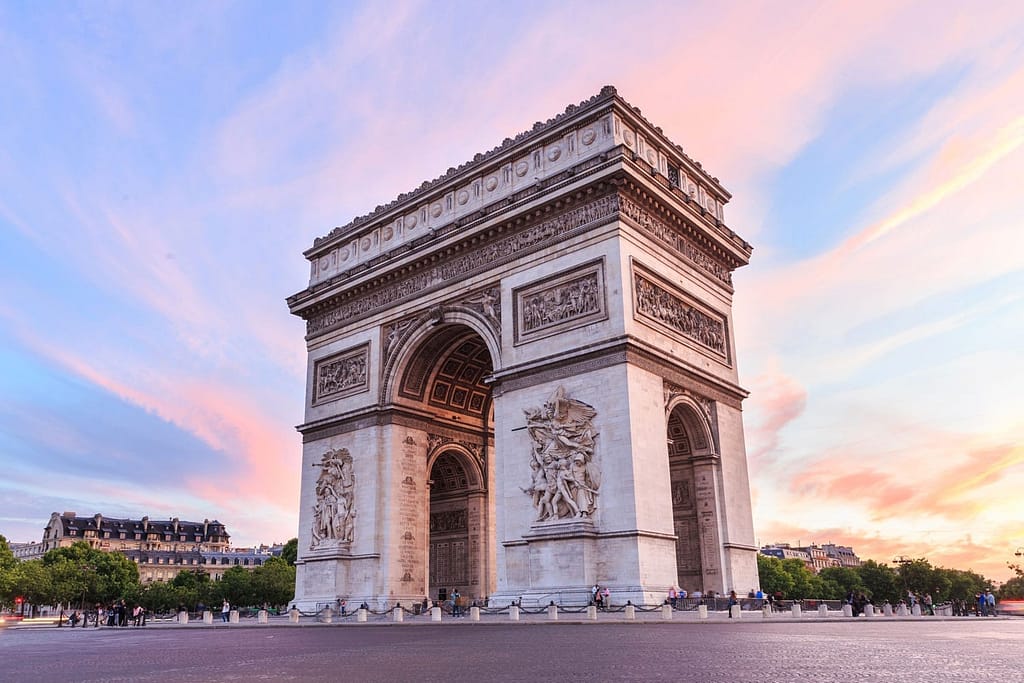
Your first and second day should be action-packed and exciting. Remember how we said visiting popular tourist attractions was a type of psychological imperative? This is your chance to do it. But before you pull out your iPhone and start snapping all those Instagram selfies, here’s a couple of tips.
- We said you don’t need to research everything about a place before you go, but learning about tourist attractions before you visit them will deepen the experience and ensure you appreciate what you’re seeing. If you’re visiting the Arc de Triomphe, read up. Maybe you’ll learn about the fact it was commissioned by Napoleon to celebrate the victories of the French armies, or that even Hitler respected the tradition of avoiding military marches through the arch, or that Charles Godefroy flew a biplane through it 1919. It definitely makes it more interesting, doesn’t it?
- There’s a trend in modern travel that involves visiting destinations, taking a few photos and then moving on. Attraction = complete. This isn’t just an attitude that misses the point of travelling – it’s also a waste of time and money. Make sure you actually want to go to the attractions you’re visiting, and spend a comfortable amount of time at each one.
- Be respectful. This is a good rule for all travel, but remember that just because an attraction is popular doesn’t mean you have a right to disrespect it or the locals. Ginkakuji is still a Shinto shrine. Uluru is still a sacred site for Indigenous Australians. Saint Peter’s Basilica is still a holy church. Follow the ground rules for wherever you’re visiting, and don’t be loud, obnoxious or pushy. And definitely don’t litter.
Days 3 and 4: Third Gear
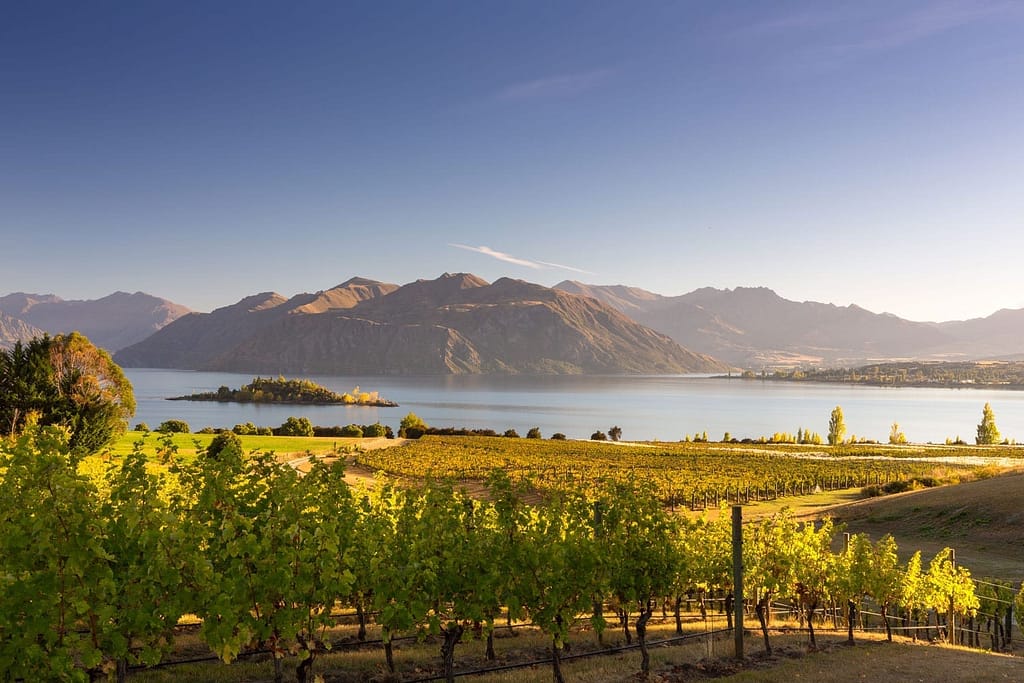
Your third and your fourth day should slow down slightly. Take this time to visit smaller, less-popular attractions which may or may not require tours – these might include things like distilleries, antique buildings, abandoned mines, working farms and so on. You’re still in ‘tourist mode’, at this point, but you’re stepping away from the big draws and switching gears to find time for the quirkier parts of your destination.
Day 5: Slow Down
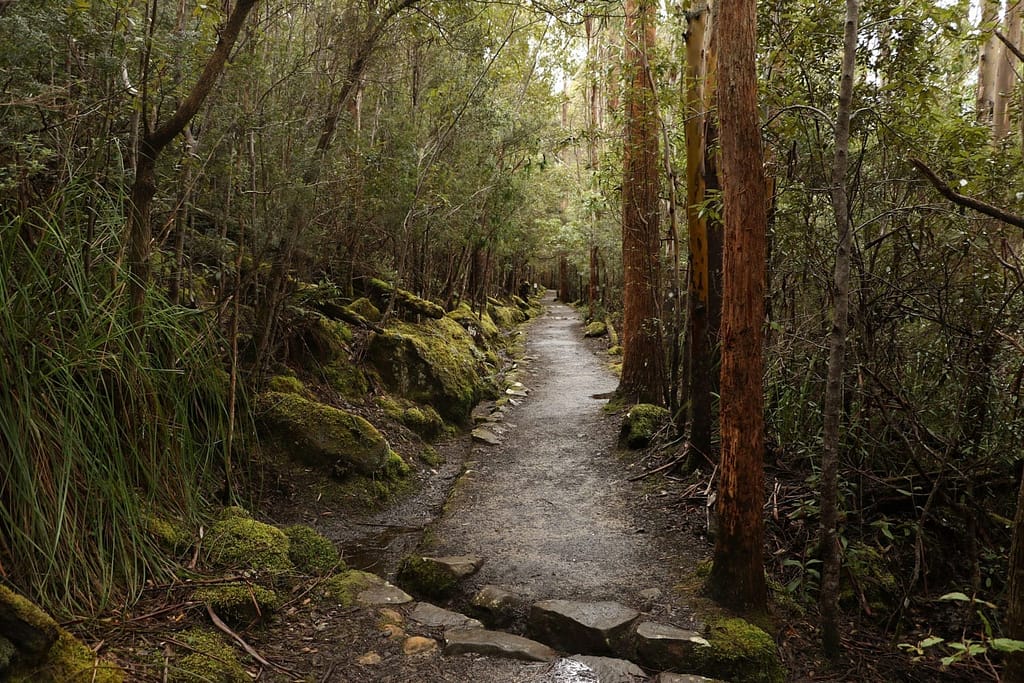
This is a day you dedicate to just one or two activities. Preferably, pick an extended tour or a long walk that gets you immersed in the local environment. For example, you might spend a day hiking on Hobart’s Mount Wellington, or enjoying a trekking tour of Bali’s Ubud rice fields. Remember to always use local operators and only engage in ethical activities that respect both the local culture and the environment.
Day 6: Zen Pace
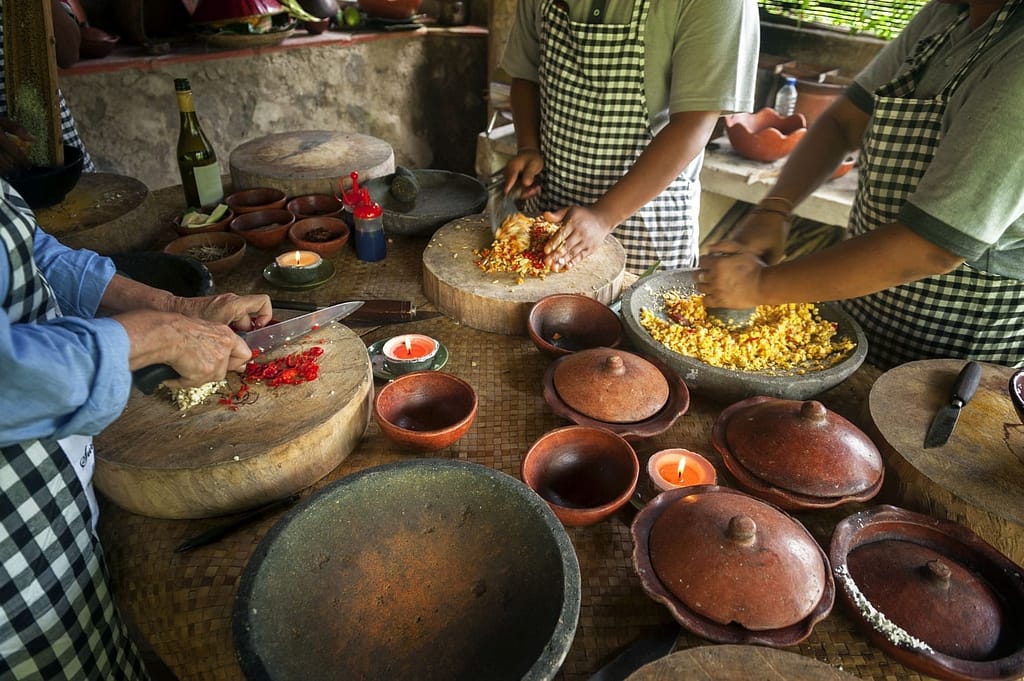
By your sixth day, you should really have a good sense of your destination, and it’s time to drill down even deeper. Adopting a ‘Zen pace’ of exploration means you’ll have time to explore the little things that can otherwise slip past. Here, you want to focus not just on seeing, but also on doing.
Try a local activity (wood chopping, statue carving, fish gutting – anything). Challenge yourself to only eat dishes you haven’t tried before. Make conversation with the locals – if they can’t speak English, learn a few phrases in their native tongue. Go for a walk around your accommodation to experience the destination at ground level.
Day 7: Get Lost
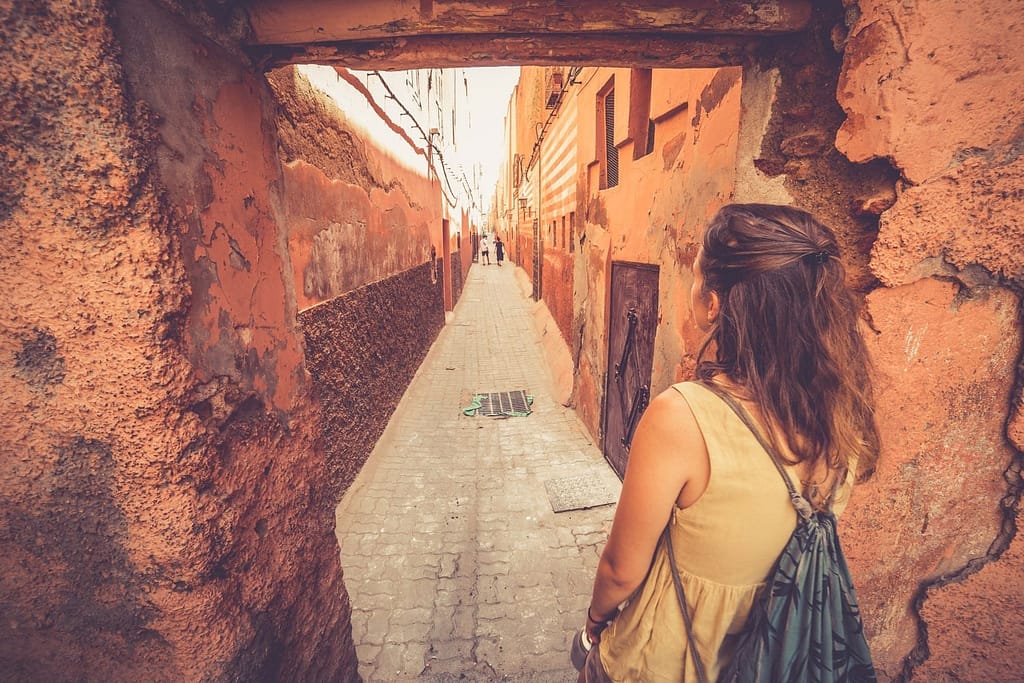
Pick a district or a point on the map. Catch a ride there. And get lost. Don’t plan this day. Don’t try to organise it. Avoid looking at your phone. Resist the urge to ask people, “is there anything to see around here?”. Just walk. Explore. Go wherever. Follow that alleyway. Turn that corner. Duck into that tiny shop.
This is about letting go of your urges to control and to plan, those fundamentally ingrained tourist instincts that tell us to fear isolation in an unknown space. On this day, you absorb. You move, and you absorb.
Eat when you’re hungry. Have a break when you’re tired. But make sure you’re not just walking – you need to be actively embracing the experience of being there. Photos are fine, although it’s important not to be a slave to the camera.
Of course, before you ‘get lost’, you need to ensure that the area you’ve picked to explore is safe. Don’t wander through the Cape Flats or go for a stroll in Tijuana. There are parts of the world, particularly those with unstable governments or ongoing conflicts, that you need to be cautious of generally. It also goes without saying that certain parts of big cities aren’t safe, especially at night, so check before you leave.
Going Forward
Although the guide we’ve provided here is great for getting started in deep travel, really burrowing into the essence of a place requires practice and the right mindset. When you get it, though, you’ll be rewarded with profound, meaningful holidays that go far beyond ‘we ticked a bunch of attractions off our bucket-list’.
Your family won’t view it as another holiday – for them, it’ll form the foundation for those golden-edged memories we look back to twenty years later, and become the kind of journey they one day want to replicate with their own families.
We’ve written this article to help you reconnect with your loved ones and get more out of your holidays, but, truthfully, deep travel can be applied even to places we walk every day. It’s a mindset that helps recapture the magic of the unexplored, that makes you remember what something looked like before you got used to it. To quote Tony Hiss,
No place, however well we know it, stays exactly the same from day to day, or even from hour to hour—there are always different combinations of people present, or different plays of light and shadow. In a well-known place, it’s also a matter of remembering how much more we could find out about things we’ve seen and used a thousand times before.


